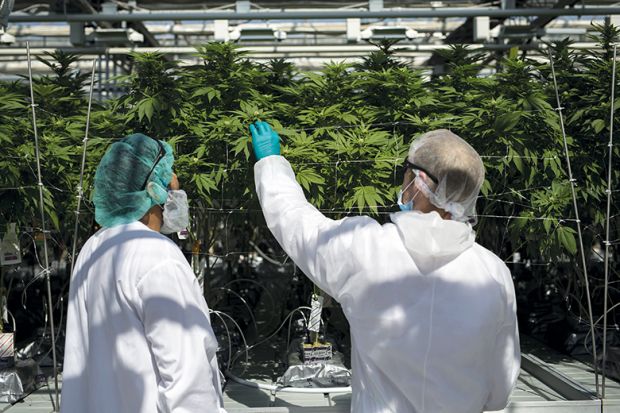US universities are struggling to meet surging public demand for research on the benefits and risks of cannabis, blaming the federal government’s continuing classification of marijuana as a prohibited drug.
In letters this month to the US Food and Drug Administration, universities warned that current restrictions on researchers investigating marijuana are raising the cost, the time and the risk of studying treatments for a range of health ailments.
The problem is so severe, said Agnes Balla, a research policy manager in the University of California system, that it is taking scientists six months just to get the necessary federal approvals to begin a study.
Researchers then face a barrage of ongoing federal obstacles, including severe restrictions on marijuana supplies, rules for tightly controlled facilities, extensive documenting and disposal requirements, and announced and unannounced visits by inspectors, she said.
“Many of our researchers have battle scars from jumping through all these hoops,” Ms Balla said.
That is despite the fact that California was the first state to legalise medical marijuana, back in 1996, and is now one of 11 US states that have now made the drug legal even for recreational purposes.
There are stores selling marijuana to the public “right down the block from us”, Ms Balla said, “but researchers can’t use that in their research protocols”.
The federal barriers and the uncertainty – even when most US states have now legalised the medical use of cannabis – are frustrating doctors and patients who wish to understand marijuana’s best and safest therapeutic uses, Ms Balla said.
That is seen by some advocates as especially urgent given the great nationwide concern about the danger of using opioids as pain relievers – now killing some 70,000 Americans a year. An expert assessment by the National Academies of Sciences in 2017 identified the treatment of chronic pain as one of the most promising uses of cannabis and related products.
Other recognised uses include treating the nausea and vomiting associated with chemotherapy, and calming muscle spasms in adults with multiple sclerosis, the study said. The research also warned of potential risks, in such areas as social anxiety disorders and decreased learning and memory skills. Experts compiling the analysis agreed that the federal government needed to encourage rather than hinder the necessary scientific investigations.
Some marijuana-related research is taking place at most, if not all, of the UC system’s 10 research-intensive campuses, exploring both potential benefits and harms. They include studies at the University of California, San Francisco using cannabis-derived cannabidiol in treating a child with epilepsy, and at the University of California, Irvine looking at the long-term effect of cannabis exposure on the adolescent brain.
Congress did act last December to end its treatment of hemp – a low-potency form of cannabis – as an illegal narcotic. But a leading association representing research universities, the Council on Governmental Relations, told the FDA this month that its rules for researchers working with cannabis, including hemp, still remain extremely cumbersome and confusing. The FDA invited the public to comment on its handling of marijuana-related research and received more than 4,000 responses.
A big part of the problem is supply, university experts said. For more than 50 years, the federal government has authorised a single facility at the University of Mississippi as the nation’s only legal producer of marijuana for research.
Three years after promising to allow other producers, and despite receiving more than two dozen applications for the work, the government still has allowed no alternatives, the Council on Governmental Relations said. Left to supply the nation, the University of Mississippi’s annual output is now reported at 2 tonnes (1,800kg), its highest level in five years.
The situation greatly limits the ability of US researchers to test a variety of strains of cannabis and the compounds that could be made from them, Ms Balla said.
Another major barrier concerns funding, she said. Most university research involving cannabis is financed by the federal government, typically through the National Institutes of Health. States and some non-profit foundations also contribute, Ms Balla said. But a potentially major source of money – the private companies in the marijuana industry – are generally too afraid to act, she said, because the federal government has not made clear what exactly it would treat as legal.
There is, nevertheless, at least some sign of progress, said Arthur B. Ellis, the vice-president for research and graduate studies in the University of California system. The average of six months that it now takes researchers to get the federal approvals they need to study cannabis is only half as long as it was a year ago, he said.
At least by that measure, Dr Ellis said, “it’s moving in the right direction”.
POSTSCRIPT:
Print headline: US universities press for looser rules to speed up research on marijuana
Register to continue
Why register?
- Registration is free and only takes a moment
- Once registered, you can read 3 articles a month
- Sign up for our newsletter
Subscribe
Or subscribe for unlimited access to:
- Unlimited access to news, views, insights & reviews
- Digital editions
- Digital access to THE’s university and college rankings analysis
Already registered or a current subscriber?






